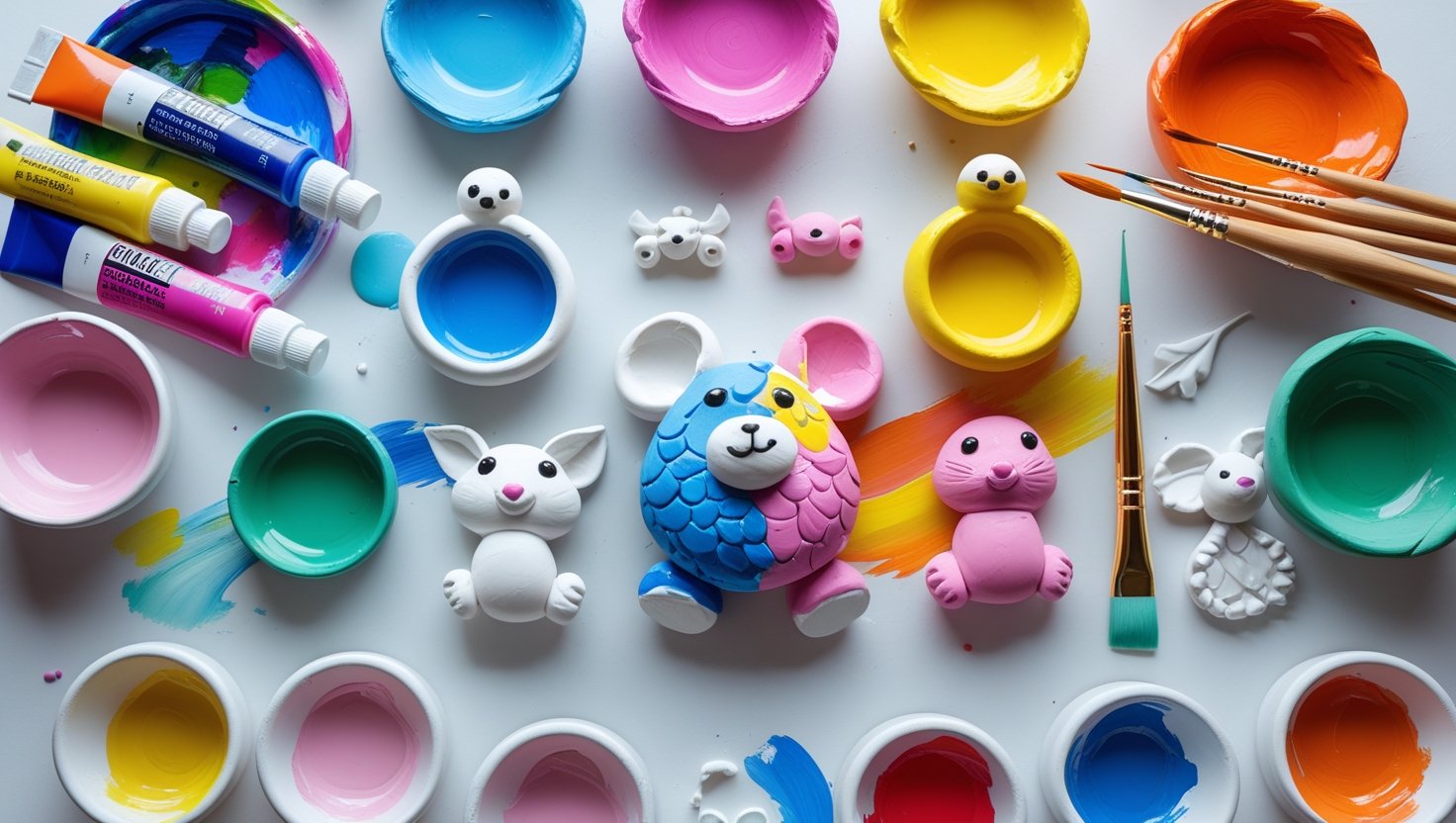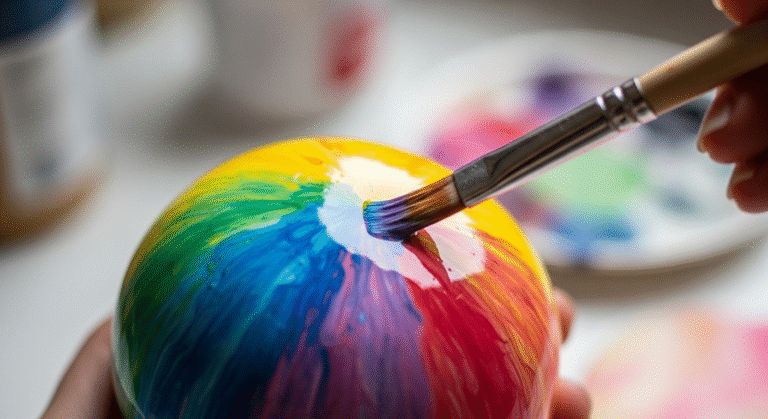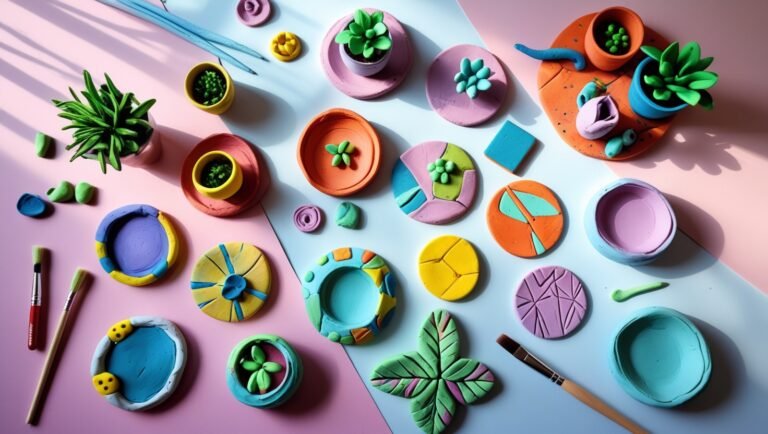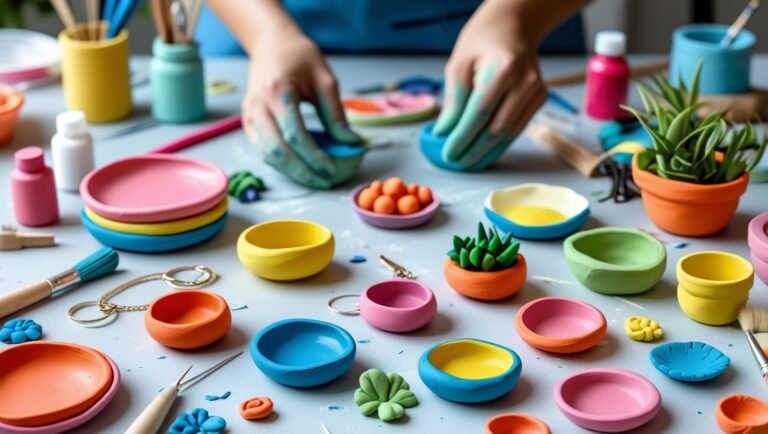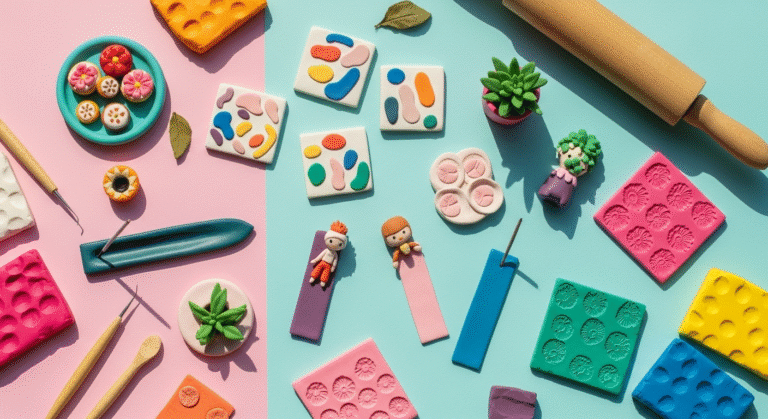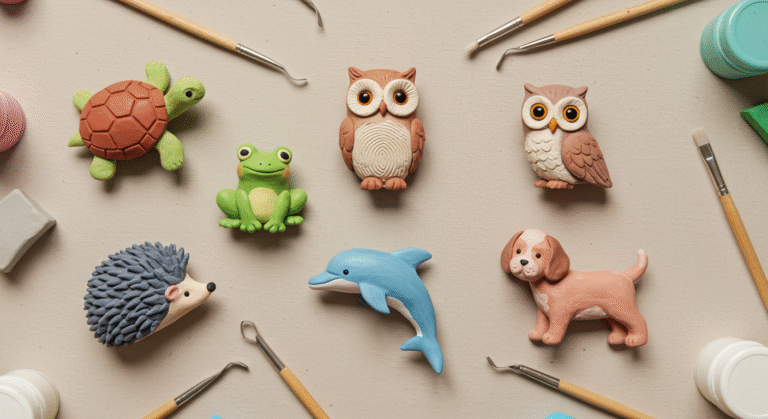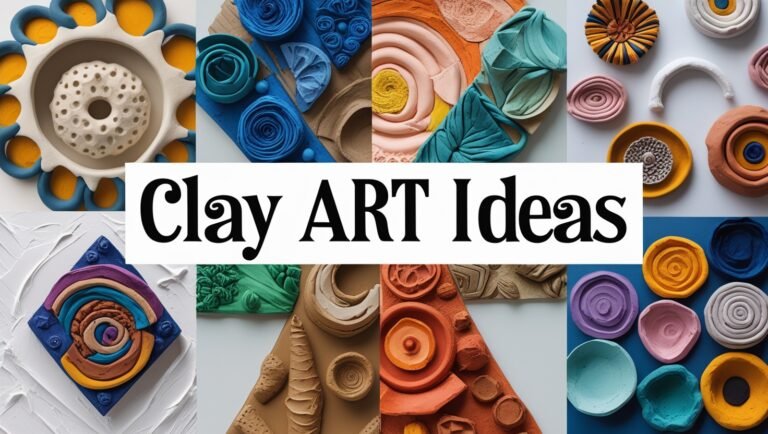Best Paints for Air Dry Clay: Your Friendly Guide to Getting It Right 🎨

So, you’ve just finished crafting your masterpiece out of air dry clay—maybe a cute little cat, a fairy house, or a mini bowl—and now you’re wondering: What paint should I use to bring this thing to life?
Well, you’re not alone. Choosing the best paint for air dry clay can make all the difference between a dull finish and a Pinterest-worthy creation.
🧲 Key Takeaways
- Acrylic paint is the most versatile and beginner-friendly option for air dry clay.
- Proper surface preparation—drying, sanding, and priming—is essential.
- Always seal your piece to protect it from cracking and moisture.
- Match your paint type to the project: jewelry, animals, bowls, etc.
- Patience = beautiful, long-lasting clay art! 🖌️
🎭 Understanding Air Dry Clay and Its Challenges
Air dry clay is an awesome medium—affordable, no kiln needed, and perfect for both kids and adults. But here’s the catch: it’s not waterproof and can be a little finicky when it comes to painting.
Because it absorbs moisture, paint can sometimes:
- Soak in unevenly
- Crack as the clay continues to cure
- Lose vibrancy unless sealed properly
That’s why understanding how to prep and paint it the right way is key to unlocking beautiful, long-lasting clay art results.
💫 Surface Preparation for Painting Air Dry Clay
Prepping your surface is just as important as the paint itself. A smooth base means vibrant colors, clean lines, and no flaking later on.
1. Let the Clay Fully Dry
Always wait 24–72 hours for your piece to dry fully, depending on thickness. If you paint too early, the surface may trap moisture and crack.
2. Sand and Smooth
Use fine-grit sandpaper to buff out fingerprints or rough edges. Smooth = pro finish.
3. Prime Your Piece (Optional but Recommended)
Priming with white acrylic paint or gesso helps paint colors appear more vivid and stay put longer. Trust me, it’s worth the extra minute.
🎨 Top Paint Choices for Air Dry Clay Sculptures

Let’s break down the top options for painting air dry clay, whether you’re crafting simple pieces or intricate clay sculpture ideas.
Acrylic Paint (The All-Rounder)
- Best for: Most projects
- Finish: Matte to glossy
- Why we love it: Easy to layer, quick drying, huge color variety
Tempera Paint (Kid-Friendly)
- Best for: Kids or school projects
- Finish: Matte
- Heads-up: Flakes off easily unless sealed
Watercolor (Soft & Subtle)
- Best for: Nature-inspired pieces or light washes
- Finish: Transparent
- Pro Tip: Works best on primed clay
Oil-Based Paint (Advanced Use)
- Best for: Experienced artists
- Finish: Rich and glossy
- Warning: Can crack the clay and takes forever to dry
🖌️ Painting Techniques to Prevent Cracking
Nobody wants to see their gorgeous painted piece crack a day later. Here’s how to avoid heartbreak:
- Dry fully before painting.
- Apply thin layers—no thick globs!
- Don’t rush the drying between coats.
- Use a soft brush for fine details, especially on animals clay art.
- Seal it up! (more on that soon)
Bonus Tip: Avoid painting the underside of a wet piece—it can trap moisture.
🧵 Sealing and Finishing for Long-Lasting Results
Once you’ve poured your heart into painting, sealing it is the final step. Think of it like a topcoat on your nails—it protects and enhances.
Types of Sealers:
- Matte: Soft, natural look
- Glossy: Vibrant and shiny
- Satin: Balanced finish
Popular Sealers:
- Mod Podge (brushed on)
- Krylon Clear Acrylic Spray
- Liquitex Gloss Varnish
Tip: Always seal in a well-ventilated area, especially with sprays.
Also Read: How to Paint and Seal Your Clay Art
🐾 Matching Paints with Project Types
If you’re brainstorming cool clay ideas or figuring out things to make out of clay, here’s a quick match-up:
Cute Animals (Cats, Frogs, Elephants)
- Paint: Acrylic
- Finish: Glossy for eyes and details
- Colors: Go bold or pastel—it’s your vibe!
Clay Jewelry
- Paint: Acrylic + metallics
- Style: Marbled, gold foil, or ombré
- Seal: Always use gloss
Mini Bowls & Pots
- Paint: Acrylic or watercolor
- Style: Geometric or abstract
- Seal: Matte or satin
Magnets & Ornaments
- Paint: Acrylic or tempera (for kids)
- Extras: Add glitter or metallic pens for sparkle
🔥 Pro Tips for Painting Clay Like a Boss
- Test paint on a scrap piece before going all in
- Use detail brushes for fine lines
- Mix paints for custom shades
- Avoid humid environments while drying
- Store pieces in cool, dry places after sealing
🙋♀️ Frequently Asked Questions
Can you paint air dry clay before it dries?
Nope! Let it fully dry or you’ll get cracking, flaking, and regret 😬
Do I really need a primer?
It’s optional, but makes a huge difference in color vibrancy and paint sticking power.
Best sealer for durability?
Mod Podge for brush-on or Krylon for spray. Pick gloss, matte, or satin based on your style.
Can I use nail polish as paint or sealer?
It’s possible but not recommended—it can become sticky over time.
🎯 Conclusion: Paint Like a Pro, Even If You’re Just Starting
So there you have it! Whether you’re creating easy clay art with the kids or experimenting with detailed clay sculpture ideas, choosing the right paint and applying it properly can take your clay game from “meh” to museum-worthy.
Let’s recap:
- Go with acrylic for the win.
- Don’t skip prep—dry, sand, and prime.
- Thin coats > thick blobs.
- Always, always seal your masterpiece.
And hey, it’s not about perfection—it’s about expression. So go ahead, get messy, and bring your clay creations to life 🎨💫

